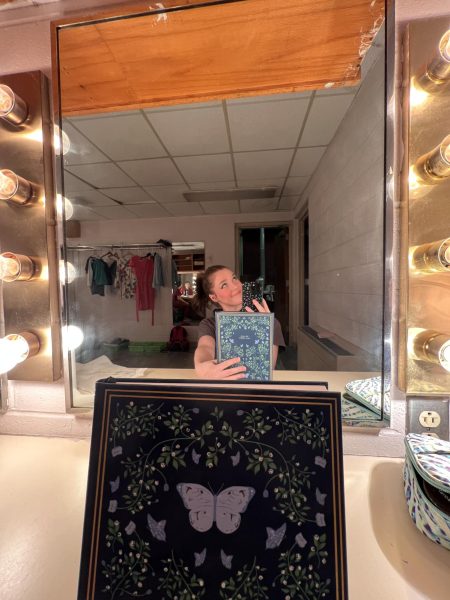Enemy of the People Review
November 1, 2019
Corruption, power, manipulation — all these are considered the themes for the play “Enemy of the People.”
People who are in power will manipulate others to get what they want through black mail, bribery, or other means necessary to remain in control over others.
The play was performed by students at Ashland University who have a passion for the art of theatre. It took many days and weeks to perfect their performance and play their respective roles as accurately as possible.
The play was based around the fictional Stockmann Family, which included the father, Dr. Thomas Stockmann, the mother, Katherine Stockmann, their daughter Petra, and sons Ejlif & Morten, and Thomas’ sister, Petrine Stockmann, who is the mayor of the town.
The story revolves around Thomas’ findings of polluted water in the town’s water supply, as the town is trying to establish itself as a spa resort, and his desire to let people know the importance of fixing this issue in order to prevent people from getting sick.
The town’s mayor, however, wants to put down these claims so people can come as tourists and enjoy the town’s luxurious spas. The conflict between Thomas and the mayor reaches the town’s newspaper and the newspaper ultimately takes the mayor’s side, which in turn causes Thomas’ family apart from his sister to experience the wrath of the townsfolk.
As most plays have a happy ending, this play does not, and it leaves the audience in wonder and awe as the fate of the Stockmann family is unknown at the end.
“Being given the opportunity to portray Peter (Petrine) Stockman was a true blessing. I have never gotten this huge of a role before so the preparation process was a bit difficult, but nothing I couldn’t handle,” Mia Kardotzke, theatre performer said. “It took a lot of dedication and time management to juggle not only this play, but classes as well.”
In the original version, the mayor was to be played as a male, but in Ashland’s version the mayor was a female. The play was written in 1882, and back then women had little to no roles in plays until the next century, as women became more involved with plays.
“Obviously, there is a vast difference between her and Thomas, you could clearly see who is the protagonist and who is the antagonist. Personally, I had to dig deeper into her as a person rather than just the shell of a cold hearted businesswoman/mayor. I had to understand why she had these motives and what she had that Thomas didn’t and how the relationship between each family member had an effect on her and her actions.” Kardotzke said.
“Especially since the character was originally played as a male, due to having that also created a deeper meaning to the character and many others, I had to really mix the two genders and make the character really powerful and a bit more authoritative due to the fact it’s a man’s character”
Each person played their roles astonishingly, as their time and effort into developing the characters did not go to waste. The play demonstrated the corruption of people and how corruption leads to chaos.
The best thing that occurred during the play was how there was moving pictures of water and people’s hands when some of the scenes showed the townspeople’s frustrations and the water’s possible effects if not treated properly.
Overall, the play was a joy to witness. The time spent going to view this marvelous performance was not wasted as it truly showed the corruption that governments can exhibit and the chaos that can follow.
Thomas was speaking the truth, but majority rules and found the truth to be lost amid the chaos. The phrase, “the truth shall set you free,” is meant to be a good thing, but it never comes to light if the majority overrules it.









